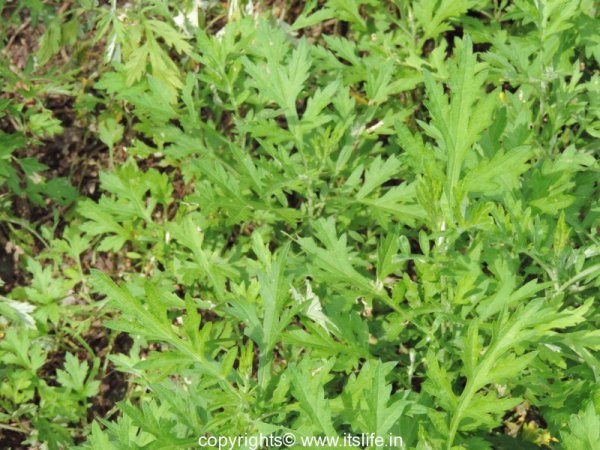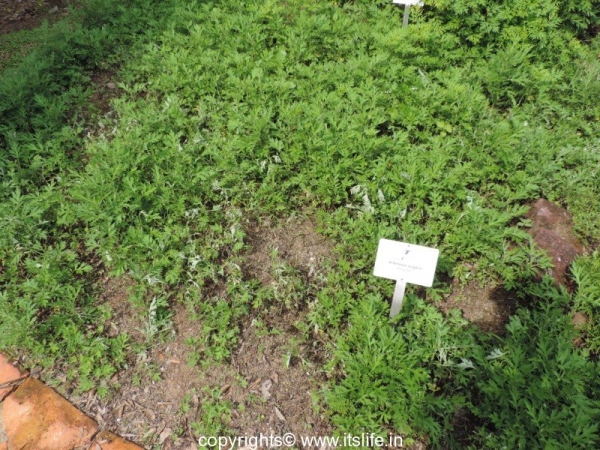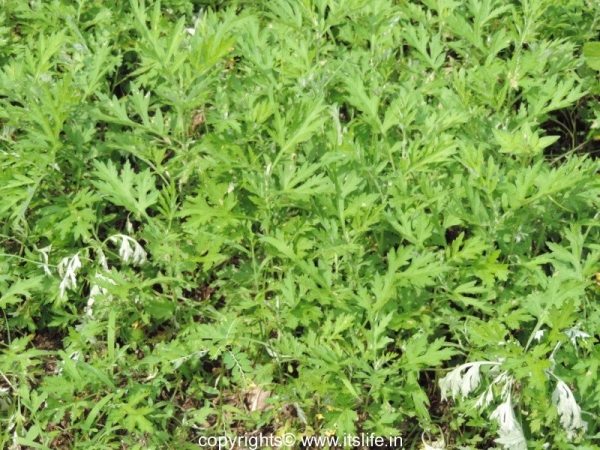Also known as Manchpatre in Kannada, Yomogi in Japanese, and Tite Pati in Hindi, Machi Patram – Japanese Mugwort is a perennial grown for its ornamental and medicinal values. Various species of mugwort that are extremely similar in qualities and appearance may be found all over Europe, China, Japan and Korea, as well as in Mexico, Arizona and New Mexico.
Pictures of the plant taken in Singapore Botanical Gardens
Botanical name is Artemisia Princeps and belongs to Asteraceae family. Machi Patram – Japanese Mugwort grows fast and spreads to cover the ground by means of stolon. The fragrant leaves are feather shaped, light green and have white dense fuzz on the underside and are 14 cms long. Small beige colored flowers bloom during July to November. Fruit is minute.
Medicinal uses:
The leaves are used to treat many diseases like Asthma, inflammatory joint disease, inflammatory skin diseases, sciatic pain, coughs and colds, and infections in Nepal, India, China, Japan, Korea, Mongolia, Tibet, and Vietnam.
Other uses:
Salads, rice cake, pancake, and soups are prepared using the leaves. Dried leaves and flowers are uses as incense and an insecticide.
The leaves are offered to Lord Ganesha during 21 Patra (leaves) Pooja while chanting the below mantra: “Om Sumukhaya namaha Maachi Patram Samarpayaami”. You can also offer Davana (Artemisia Pallens) leaves while chanting this mantra.
Japanese Mugwort is placed outside homes to keep evil spirits away in Korea and Japan.
Propagation:
Machi Patram can be grown by cuttings and seed. Plant in well-drained soil, semi-shade or complete shade and ensure that you water every day.




